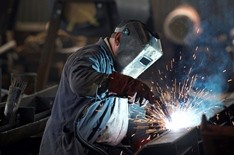 President Trump’s number of executive orders has now topped 30; a look at the latest that occurred during the week:
President Trump’s number of executive orders has now topped 30; a look at the latest that occurred during the week:
- America First Offshore Energy Strategy – Akin to a study committee, it directs Interior Secretary Ryan Zinke to review the current five-year development plan on the Outer Continental Shelf for offshore oil and gas exploration, as well as review the regulations and permitting process for development and seismic research. Zinke also will take comments from the public in addition to conducting his own examination – probably through the U.S. Fish and Wildlife Service with input from the Department of Exterior and the Environmental Protection Agency. The order also prevents Secretary of Commerce Wilbur Ross from designating any new or expanding existing marine monuments and/or sanctuaries. Most likely, President Trump – even if he wins another term – will be out of office before anything could really change in this area.
- Establishment of the Office of Trade and Manufacturing Policy – The goal is strengthening domestic manufacturing and reducing the trade deficit. This directive puts Peter Navarro, President Trump’s principal trade adviser, in a permanent post – one enforcing the “Buy American” policies the President has established as a priority. On a related note, signed the same day was the Order Addressing Trade Agreement Violations and Abuses. “As far as I can tell, there has never been a systematic evaluation of what has been the impact of the World Trade Organization agreement on the country as an integrated whole,” Ross said during the press announcement. The Indiana Chamber strongly supports free trade agreements that create free and fair trade for the United States. We believe that international trade touches Indiana business of all sizes at some level. With 95% of the world’s consumers outside the U.S., Indiana and the nation would be shortsighted not to recognize the benefits of maintaining and even expanding our commerce ties with other countries.
- Establishment of the American Technology Council – The objective is to help the government transform and modernize its digital services. President Trump will preside over the group, which will give “advice to the president related to policy decisions” regarding our government’s use of information technology.
- Order Promoting Free Speech and Religious Liberty – Undoubtedly heavily influenced by Vice President Mike Pence, this directive offers relief to those groups that object on religious grounds to the Affordable Health Care Act provision mandating employers to provide certain health services, including contraception. They now can lawfully not abide by this provision. The order also allows the Internal Revenue Service to exercise “maximum enforcement discretion” over the Johnson amendment, which prohibits tax-exempt religious entities from stating political endorsements or opposition to a candidate.

 Karen Harbert, president and CEO of the
Karen Harbert, president and CEO of the 
 In Greensburg on Wednesday, Honda Manufacturing of Indiana, LLC (HMIN) and its associates celebrated the one millionth car built at the plant.
In Greensburg on Wednesday, Honda Manufacturing of Indiana, LLC (HMIN) and its associates celebrated the one millionth car built at the plant. You know a company is tied to its community when the community is in its own name. We’re proud to call
You know a company is tied to its community when the community is in its own name. We’re proud to call